- Category:
- Tag:
Applicable Business AreasSemiconductor manufacturers, substrate manufacturers, PCB Manufacturers
Target ApplicationsStress absorption prepreg for improving Board Level Reliability (BLR) of electronic systems
Applicable Business AreasSemiconductor manufacturers, substrate manufacturers, PCB Manufacturers
Target ApplicationsStress absorption prepreg for improving Board Level Reliability (BLR) of electronic systems

Communication modules incorporated into industrial equipment or security terminals provide a communication function. Their utilization in on-board devices has been increased in conjunction with the introduction of Internet of Things (IoT) in vehicles, and the devices are expected to offer high Board Level Reliability (BLR).
In on-board communication modules, low-cost FR-4※ material are mainly used for the printed circuit board material. However, such a PCB on which electronic parts are mounted does not absorb stress caused by the thermal mismatch between the substrate and mounted parts, which is due to changes in temperature of the car engine or environmental air. This develops cracks in solder joints on the PCB over time.
Our PCB stress absorption prepreg <TD-002> with low elastic modulus absorbs stress in solder joints and reduces cracks if it is used on the outside layers of the PCB stackup, contributing to higher reliability of on-board communication module.
Thermal expansion and contraction of chip parts and the substrate are repeatedly caused by changes in temperature of the engine or external air. Stress is repeatedly applied to solder joints due to thermal expansion difference, thereby resulting in solder cracks in on-board semiconductor packages.
Storage elastic modulus of <TD-002> is 0.8-1.2 GPa and its bending modulus is 5-8 GPa. These values are about one-fourth those of standard FR-4 substrates. <TD-002> used on the outside layers of standard FR-4 substrates follows the deformation of chip parts and the substrate caused by thermal expansion difference between them, and absorbs the stress applied to solder joints.
Therefore, it is possible to reduce solder cracks by combining a standard FR-4 substrate with <TD-002> to achieve improved BLR. Alternatively, advanced low thermal expansion materials can be used as a higher cost option.
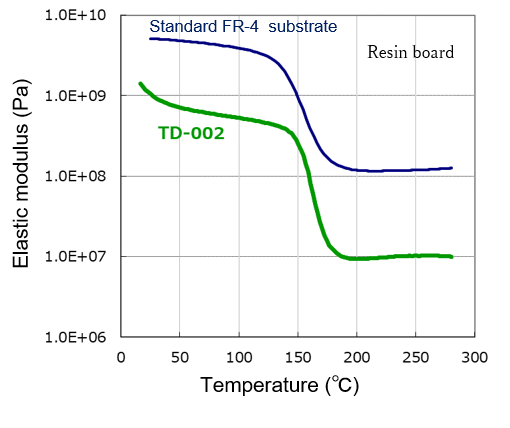
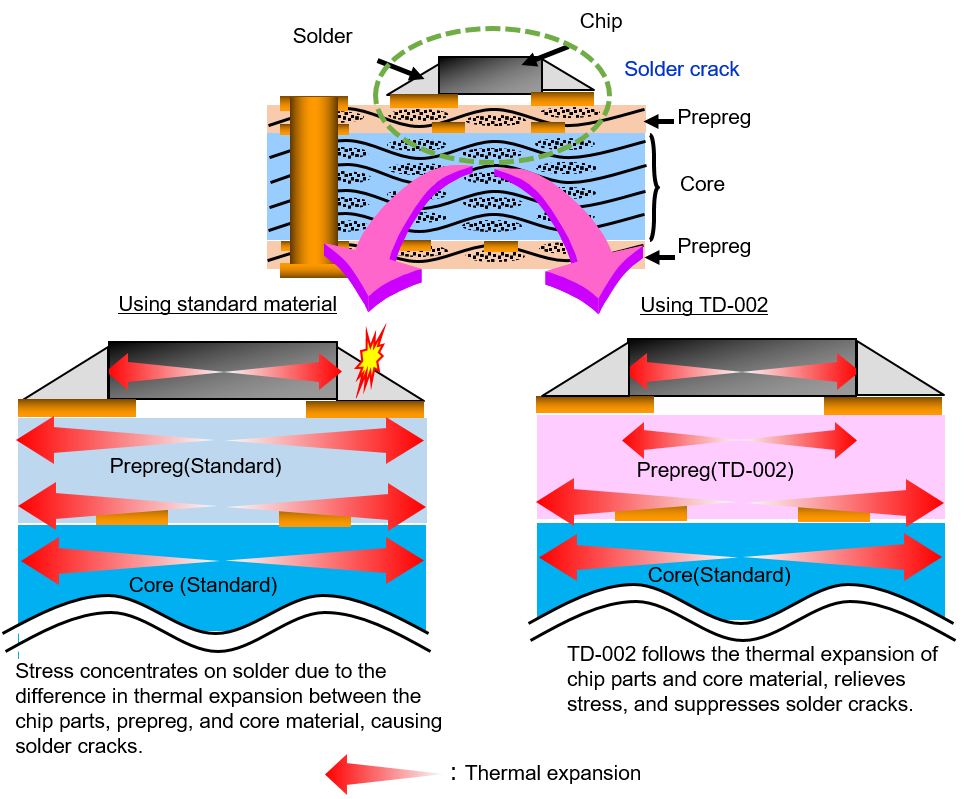
After thermal cycle test (TCT) at -40 to 125℃, solder crack rate is still low even after 2,000 cycles.
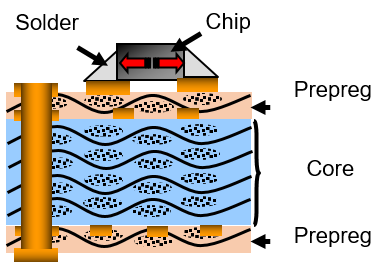
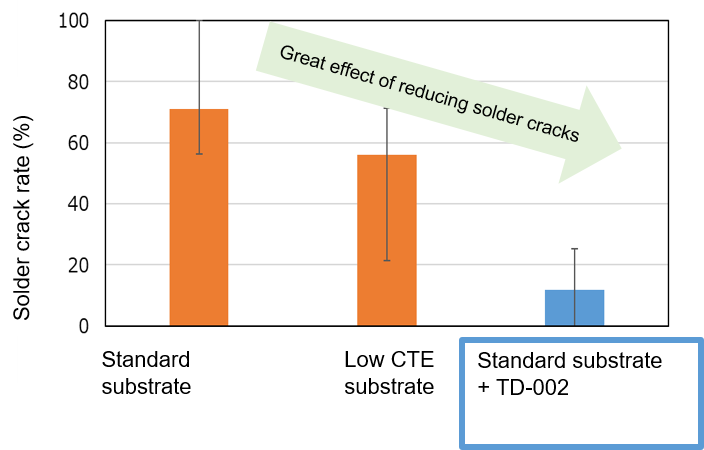
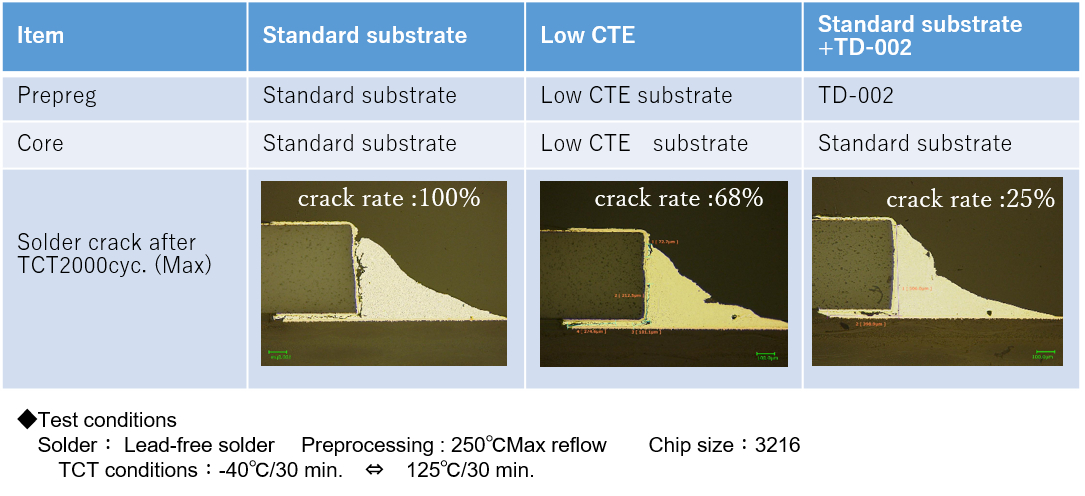
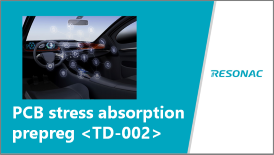
Contact Us
Please don't hesitate to contact us if you have any questions.